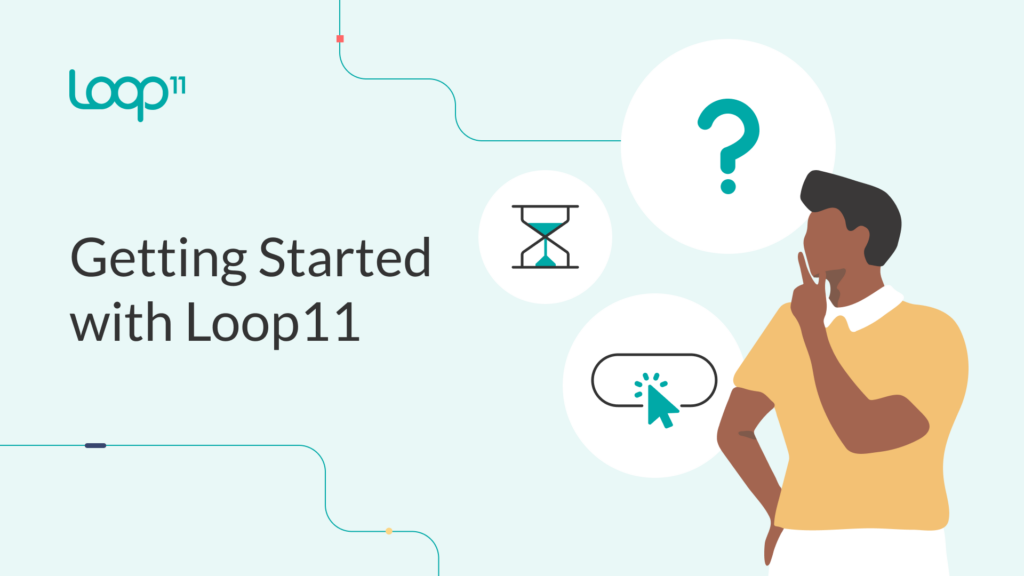Video Transcript:
Today we’ll look at the different types of questions you can use for your usability study on Loop11, and how to add them to your project.
Questions play a crucial role in gathering valuable insights, and Loop11 provides a range of question types to suit your research needs.
There are many different types of questions: Multiple choice, Rating Scale Matrix, System Usability Scale (SUS), Ranking, Net Promoter Score (NPS), and Open Ended Response.
With multiple choice questions, you can choose between a single answer or multiple answer question.
With rating scale matrix questions, participants will be asked to rate items on a scale. This question format is based on the popular industry standard SUS (or System Usability Scale) question. The SUS measurement is designed to quickly and reliably gauge the usability of a given website or piece of software. A set of 10 statements are provided which participants then rate how strongly they agree or disagree with for each statement.
If you would like to use our pre-made SUS questions, which are based on industry best practice, select the SUS question. If you would like to create your own, select the Rating Scale Matrix.
Next, ranking questions let users rank or prioritize options, which is great for understanding user preferences in a specific order.
NPS (or Net Promoter Score) questions are another common type of question typically used to measure customer loyalty by asking participants how likely they are to recommend your product or service to others. Select NPS if you would like to use our template which uses the standard numbered range from 0 (Not at all likely) to 10 (extremely likely). Alternatively, if you would like to create your own scale, use the Ranking type question.
Lastly, we have Open-Ended Responses. These questions provide participants with the opportunity to share their thoughts, opinions, and feedback in their own words. Open-ended responses are valuable for gaining in-depth insights into user experiences, motivations, and challenges.
Now, let’s look at how to set them up.
To create a new question, click New Question. Here, select the type of question you want to use.
If you want to use a multiple choice question, choose between the single answer and multiple answer options. The Question Name is for your internal use, as participants won’t see this title.
Here, enter in your question. Feel free to use this AI Assist tool to help you with your writing if needed.
Below is where you can enter all the answer options. If you need more slots, click Add an Answer. Click this minus button here to delete an answer.
Finally, you can choose to make this question mandatory, randomize the order of the answers, or add an Other option where users are able to type in their own answer.
Preview your question by clicking the eye up here. Click save to close this box and continue adding more questions. You can also duplicate questions by clicking this, and delete a question with the trash button here.
For the Rating Scale Matrix, the process is mostly the same. Below the question, you can enter the various statements that you would like users to rate. The Matrix selection means you will need at least 2 or more subjects to rank. If you only have 1 subject to rank, select the [1 answer] option.
Remember, the SUS pre-made question is also available which already has everything built in.
The Ranking questions are fairly straightforward to set up – simply add your questions and the options below.
The NPS question is pre-made as well so all you have to do is write the question here.
Finally, there are 4 options for open-ended questions. Select [1 answer] if you only have one short answer question. Select [multiple items] if you are wanting to ask a set of questions. Choose [comment box] if you want participants to enter in a longer response. The [Verbal Only] option is for when you want participants to answer verbally, rather than in writing.
A few final tips for writing your questions:
- Combine question types to build the big picture. For example, use the Rating Scale Matrix to ask how easy a task was; then add an Open Ended (Comments Box) asking them why.
- Consider the Order of Questions: Arrange questions in a logical order, moving from general to specific. This helps participants ease into the testing process.
- Pilot Test Your Questions: Before conducting the actual usability test, pilot test your questions with a small group of individuals to identify any issues with clarity, ambiguity, or potential biases.
There you have it – the different question types available in Loop11 for your usability studies. The key is to choose and tailor your questions strategically based on your research goals. Mix and match different question types and tasks to gather comprehensive insights and enhance the usability of your products or interfaces.
Thank you for joining us today, and happy testing!










